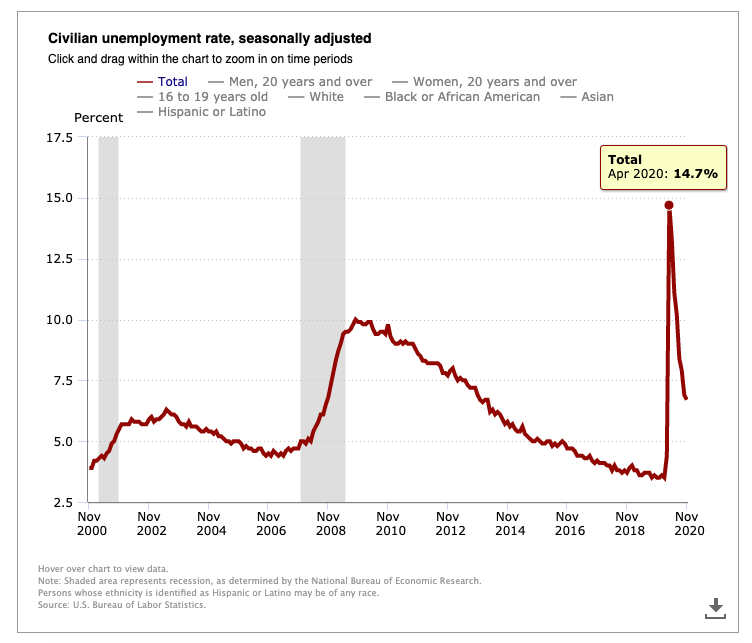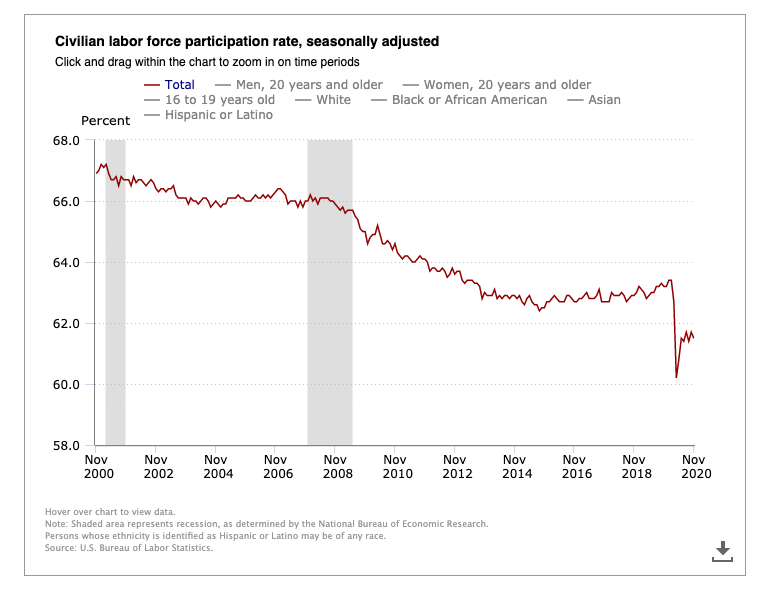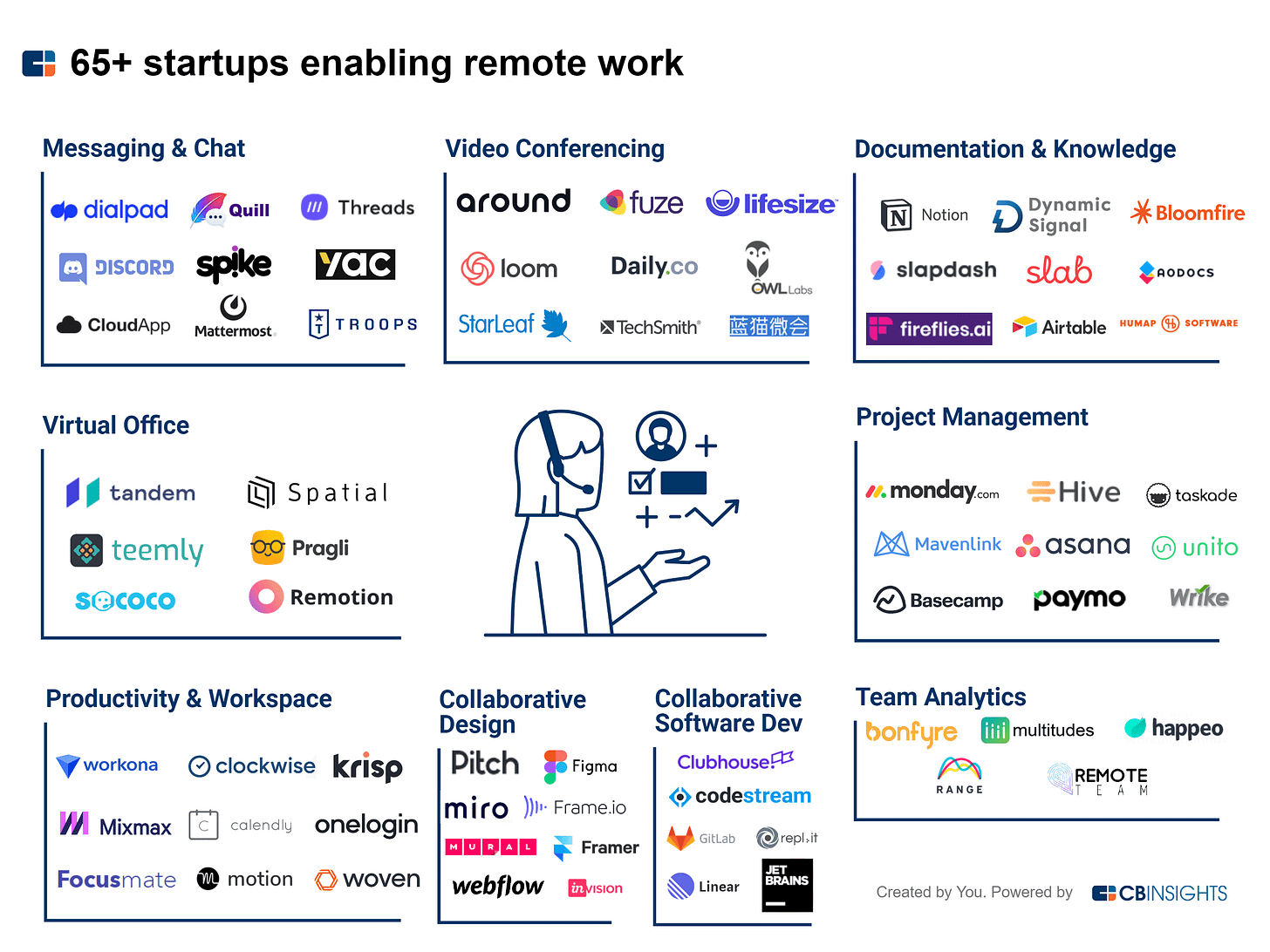Welcome to Evolver, a newsletter on the evolution of work and the way work gets done. Each week, we’ll share thoughts and analysis. Today’s edition is co-authored by Jon and Jordan.
A special welcome to our new subscribers since last week’s edition on Getting Bored to Get Things Done. If someone forwarded you this edition, we’d appreciate it if you would subscribe.
If you have feedback on Evolver, reply to this email or leave us a comment. And check out this thread of topics we are excited to write about in 2021.
At Evolver, we’ve been thinking about the challenges and changes this year due to COVID-19 and global unrest. This week, we put together a long-form edition — a Year In Review highlighting significant shifts in work during this mind-boggling year.
2020 has been remarkable for the evolution of work. Against the backdrop of a global pandemic and political and social changes, the nature of work changed in some fundamental ways. Some of these changes are pretty obvious, others less so, and the long-term ramifications of these changes are potentially enormous.
We’ve compiled five ways we think work changed in 2020 as part of our Year In Review. Next week, we’ll share our predictions for work in 2021.
Let’s get started.
1. Remote work for all.
We said some of these would be obvious, right? The rapid rise of remote work — both in its scale and speed — marks a massive change for how and, crucially, where we get things done.
Perhaps what’s most impressive about the shift to remote work is how much it appears as a non-issue for many people and organizations. For years, companies have cited many reasons why they couldn’t operate in or transition to a primarily remote environment. But in 2020, those reasons disappeared under the pressure of a global pandemic, and most companies transitioned to remote work just fine (all things considered). That’s not to say the change didn’t take an incredible effort; a huge kudos goes out to all of the IT and operations teams that made the remote move happen. Still, the changeover was far less dramatic than we might have expected. Remember, the switch to remote work occurred in a world where previously, people would have to compromise between a dream job and an ideal living location.
While the move to remote has meant that we’ve adjusted our work attire (is business formal finally done?), what is essential is how industries that are known for being slow to change (e.g., Jon’s sector, higher education) made the shift. We’re not saying everyone is happy about the change, but moving to work-from-home revealed just how flexible the workforce and organizations could be. Even as each of us grappled with adjusting to the “new normal,” our work lives continued. Projects and products were completed, events were hosted, new hires were made, deals were finalized. Even if the situation was less than ideal, some of the most stubborn industries successfully made things work. It’s too early to know if remote will be a permanent shift, but this year has proven the point; a remote workforce can succeed in many industries. While there are notable caveats, such as elementary and secondary education, we found many successes in the work-from-home evolution this year.
A few overarching questions come to mind: if the working world handled the switch to remote this deftly, what does that say about the potential of making other seismic shifts quickly? Will we realize that other once-unthinkable changes are within our grasp? Something to look forward to in the coming years.
2. Record-high unemployment, partial recovery, but maybe not?
It’s hard to write about 2020 without addressing the economy and employment. The pandemic has hurt some industries more than others and condensed many years of evolution into a matter of months. Warning: Get ready for some light macroeconomics — we’ll get through it together.
Back in April, the unemployment rate rose to 14.7% (see the rather dramatic chart below). That figure is stunning, as it’s the single largest one month jump in unemployment since 1948 when the US Bureau of Labor Statistics first started collecting this data.

As of November, the unemployment rate has fallen (i.e., improved) to 6.7%. The economy has partially recovered. However, there is more to be concerned about, as economic recovery is not the only factor contributing to the unemployment rate.
First, a quick introduction of some terms: The labor force is the population working or actively seeking work. The participation rate is a measure of an economy's active workforce — the number of workers in the labor force over the total population of workers. Lastly, the unemployment rate is the percentage of unemployed workers in the labor force. Notice we calculate the unemployment rate from the labor force, not the working population.
When the participation rate goes down, this can lead to a lower unemployment rate — here’s how: When workers stop actively looking for work, they “drop out” of the labor force. As a result, they also become excluded from the unemployment rate. So, a decrease in unemployment isn’t always because companies hired more people; it can also mean more people have stopped looking for work. For a more in-depth explanation of the two rates and the impact of 2020, see this fantastic blog post from the St. Louis Fed.
We’ve already seen a large drop in the participation rate in 2020. According to data from the US Bureau of Labor Statistics, the labor force participation rate dropped in 2020 (see the chart below), accelerating a downward trend of workforce participation. The trend started in the early 2000s due to an aging workforce and other factors, but a precipitous drop occurred this year. One likely factor is that workers have been leaving the labor force due to the pandemic’s challenges. According to the National Women’s Law Center, 2.2 million women left the labor force from February to November 2020. And the New York Times has done a good job documenting just how hard the pandemic hit young people entering the workforce. Indeed, the college graduates we know have been representative of that struggle. If you haven’t seen it for yourself, check out all the LinkedIn posts from recent grads struggling to find jobs.

Our takeaway is this: while the unemployment rate is one indicator of economic health, it doesn’t capture the whole picture. The drop in the participation rate shows that shifts in the labor force aren’t going away quickly.
Just see this final BLS chart of people not in the labor force who want a job. The economy is trending in the right direction going into 2021, but there are still challenges to overcome.
3. (Business) travel all but ended.
Before the pandemic, Jon’s role required him to be on the road for upwards of 40-60 nights each year. He notes: “When I was deciding between my current job in higher education and an offer to work at a PR firm six years ago, the possibility of traveling for work was high on the list of reasons I chose higher education. For those of you out there who were road warriors along with me, many of us had a love/hate relationship with business travel.”
Business travel had its perks: changing up the monotony of working in a single location, meeting folks from all over, earning loyalty points for lovely vacations during PTO, and exploring various areas of the globe you might not have visited otherwise. However, it also meant strains on our relationships, struggles with balancing health, jet-lag, and lost productivity. Could we ever really rely on airplane wifi?
The pandemic paused personal travel for most. But, as both a reflection and, perhaps, a prediction, COVID-19 decimated travel for business. We’ve come to realize, along with many of our peers, that business travel was often superfluous. We still think there’s an important place for colleagues to come together for professional development and conferences. However, traveling for a meeting or two seems unnecessary these days, now that we’ve proven we can effectively host most meetings remotely.
Virtual meetings replaced the 80+ presentations Jon gave each fall. There was undoubtedly some reduction of audience connection and engagement in a remote setting (another topic for another day), but the opportunity cost made sense. Rather than spending days traveling—flying to different states, driving to meetings—Jon was able to use his time more productively and restore some work-life balance. During a travel week, he typically spent an hour or two each day driving to each presentation site. This year, he’s taken back that time to work on other projects. We’ve seen that remote work works.
What would management consulting look like if almost everything was off-site? How about recruitment? When we think about the evolution of work, that change alone can shift entire industries. The reduction in business travel is an economic necessity for some organizations. Despite stock market rallies, parts of the broader economy are still hurting. Most sectors practiced some belt-tightening, and we expect budgets will be more regimented moving forward. Until recovery comes, business travel can be replaced with a remote meeting in most cases, and that travel reduction will have a considerable impact on certain industries.
4. A new remote work ecosystem emerged.
2020 marked the formal emergence of a work-from-home ecosystem. Many tools and products for remote work had been around for a while, but the 2020 pandemic accelerated widespread adoption. For instance, tools like Zoom and Slack feel like household staples today. These tools integrate well with other services, and there are plans to build ecosystems of their own. We believe the emergence of many new products has formed a work-from-home ecosystem that will mature throughout 2021.
These tools have not only changed how we work but also our behaviors. Video calls used primarily for work became a mainstay for social gatherings in 2020. Both of us have regular Zoom sessions with college friends, coworkers, and distant relatives, and we are not the only ones. The video call has been fully normalized as a form of social interaction for everyone, not just Gen Z. The work-from-home ecosystem has not only penetrated our work routines but our non-work habits as well.
We expect many new startups in the work-from-home ecosystem. See the infographic from CBInsights below on some top startups in this space. You may already have heard of tools here, while others are some that we fully expect to become household names in 2021.

Jordan notes: “I’m not sure I would have predicted this patchwork of tools and services that made their way into our homes in 2020, but I expect the proliferation of the work-from-home ecosystem and the maturation of many of these products to continue into 2021.”
5. Politics intersected with work.
“In 21st century America, everything is political” - Paul Krugman
While we’ve seen politics and identity play a role in work over generations in ebbs and flows, that interplay seemed to come to a head in 2020. This was a year where separating work and life was not in the cards due to our remote work experience and global events. That’s been a good thing for progress in diversifying teams, bringing new perspectives to the table, and *starting* to address the many inequities in the world of work. We don’t want to sound too rosy here—there’s a long way to go.
But, politics and identity took a front seat in a big way in 2020. It’s mainly notable to see that as Gen Z continues to enter the workforce, their generational views are also pushing organizations to reevaluate and make substantive changes.
For the first time in years, action on diversity, equity, and inclusion appear to be real priorities for many. This rise of politics and identity in organizations has led to tough conversations, with many companies still in the process of figuring out how to upend structural inequities.
We say this is a major shift because, in the past, the canon for most companies was to remain apolitical (save for some uncontroversial social responsibility initiatives). For companies, leaders generally saw it as responsible to stay out of politics. In 2020, however, we saw a shift where stakeholders, from employees to customers, now expect companies to take a position.
Life in 2020 was political, so stakeholders asked organizations to take a stand in one form or another on various issues. New challenges and opportunities for organizations to be sure.
We want to close out this week’s special edition on a personal note. It’s been a tough year. As we look forward to 2021, we are both hopeful for a better future and excited to write more about the evolution of work.
We want to take a moment to thank you, our readers, for supporting Evolver. If you’re a new subscriber, welcome. We’re excited to be exploring the evolution of work with you. If you haven’t yet, please check out this thread of topics we are excited to write about in 2021 and suggest some topics you’d like to have us tackle.
Next Monday, we’ll kick off the new year with our predictions for work in 2021. Stay tuned, and have a safe and happy new year.




